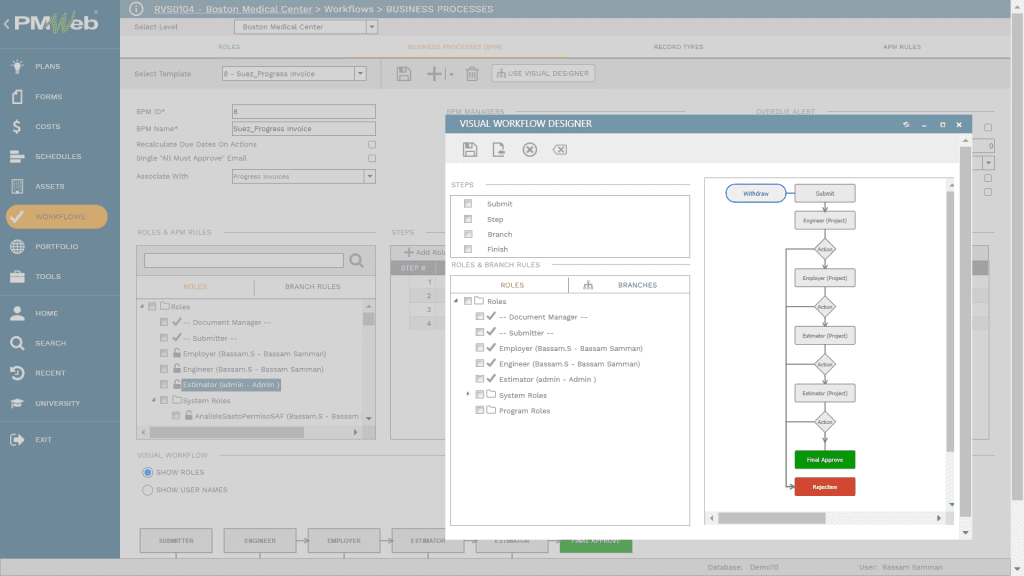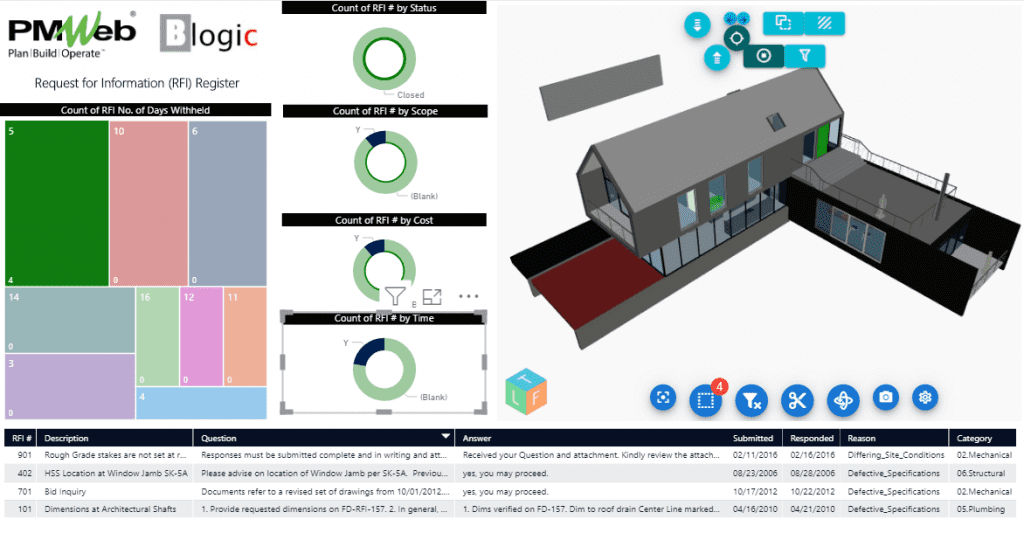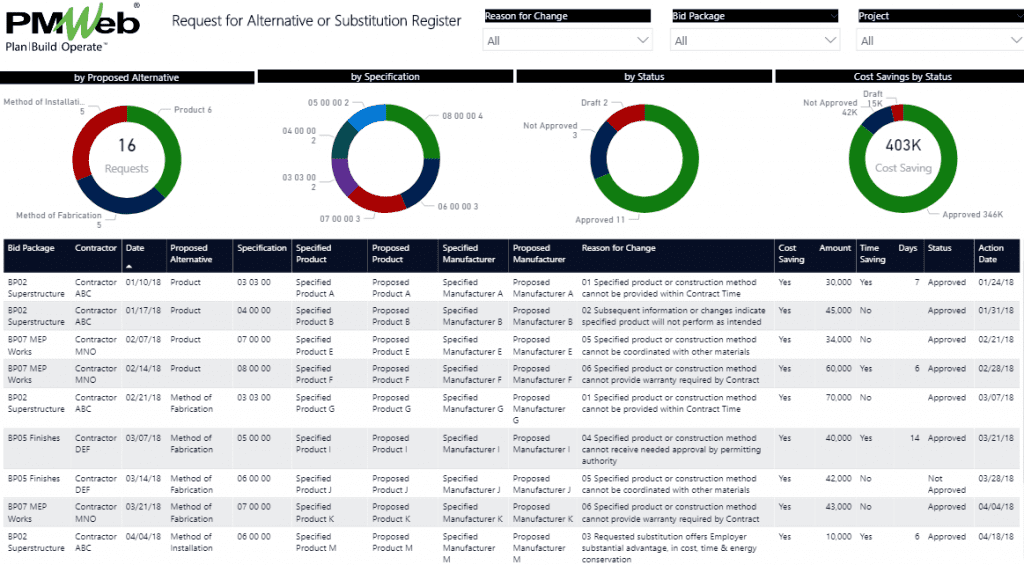Specifications are one of the basic components that make up the contract agreement between the Project Owner and the Contractor. Specifications define the requirements for products, materials, and workmanship upon which the contract is based and the requirements for administration and performance of the project. Project specifications are a must to execute construction. It should be noted that a specification created for one project may not be applicable for a similar project. Project specifications will be either developed by project architects, the engineering consultant, or the engineering department if the design development is performed by the project owner’s own resources.
Poorly written or coordinated specifications can lead to delays, additional cost, lower quality, issues when the facility becomes operational, disputes, and increased confusion while jeopardizing the project’s design intent. One of the reasons that attribute to poor specifications is the practice of cut and pasting a specification multiple times. Other reasons include outdated and incomplete specifications as well as multiple potential conflicting references (guidelines, codes, standards, etc.). In addition, conflicts between drawings and specifications is another reason that could lead to poor specifications. One of the areas that technology can disrupt the construction industry is disrupting the inefficient traditional methods used in managing project specification-related processes.
The technology available today can drastically eliminate the consequences of poor construction project specifications by improving the quality of the specification document developed by the engineering consultant, integrating specifications with the Building Information Model (BIM), used to detail the project’s design intent, single location to store and access all contract specifications and succeeding revisions. This generates a complete submittal log detailing the contractor’s obligation to what to submit, enforcing formal collaboration for submitting, reviewing, approving, and distributing submittals, enforce a formal request for information (RFI) process to clarify all ambiguities, and enforcing a formal process for material substitutions. In addition, it is a must to use business intelligence and data visualization tools to provide the needed insight to monitor, evaluate and report the performance of those processes.

Improve the Quality of Project Specifications
Specification writing applications like VisiSpecs, The Visual Specification System by Chalkline, Inc. provide a comprehensive platform to write and manage project specifications. VisiSpecs is document neutral so can be used with all specification documents and formats. Using familiar applications including Autodesk Revit and Microsoft Word means users can access the data they need without learning entirely new applications. Share project specifications and related files via the VisiSpecs Cloud Server with consultants, owners, and other team members facilities coordination.

Integrate Project Specifications with BIM Models
VisiSpecs enables integration with the BIM Model to ensure coordinated specs and model elements and materials are in sync. At any time throughout the design process, the in progress model and specifications can be reviewed, coordinated, and alerts provided where inconsistencies exist. Collaboration is improved as these alerts are available either in the modeling application or Microsoft Word through the VisiSpecs Cloud Sync technology. Additionally, links to product manufacturers, data sheets, installation criteria, and other related files can be included with the specs and linked directly to the model objects. Centralized and easy access to model and spec data accessible in the application used by team members means easier collaboration and faster decision making including submittal requirements.

Store Contract Specification Documents and All Succeeding Revisions
Project Management Information System (PMIS) like PMWeb come ready with its own document management system where folders can be created to upload and store the contract specification documents. Whenever those specifications would be subject to a revision, the specification section to be revised will be checked out first and then the revised specification will be checked in. This will automatically maintain the specification revisions history.

Generate Complete Submittal Log
Submittals are part of the specifications and can drastically change the cost to build so ensuring only those submittals required are selected is important. VisiSpecs automatically extracts submittals from the Construction Specification Institute (CSI) MasterFormat specifications into a Microsoft Excel report.

Formal Collaboration to Submit, Review, Approve and Distribute Submittals
Project Management Information Systems (PMIS) like PMWeb would usually have the submittal module as one of the ready to use processes. PMWeb submittal module allows importing the submittal log from MS Excel into PMWeb to the general list of all submittals that the Contractor has the obligation to complete.

It is also highly recommended that the project’s schedule includes the submittal activities needed to complete the procurement and on-site installation activities. This will allow importing those activities into PMWeb and associating each submittal item with the relevant activity.

It is a recommended practice that each submittal item is attached with the relevant specification document already uploaded into PMWeb document management repository along with the submittals items which could be shop drawings, as-built drawings, product catalogue, operation and maintenance manual, certificates, guarantees, test results among others.

Workflow will be assigned to the submittal module to ensure that the review, approval and distribution of submittal is carried out in accordance with the project management plan. The workflow will detail the needed tasks, duration of each task, role or individual assigned to the task, actions assigned to the task and the sequence for performing those tasks. The workflow could include conditions to channel the submittals review and approval to the intended recipients depending on the submittal specification section.
Being a web-enabled solution, individuals involved in the submittal review and approval process, can collaborate regardless where they are located. PMWeb allows authorized users to access their permitted modules anytime, anywhere using any device. In addition, being responsive, PMWeb’s layout will be automatically adjusted depending on the user device whether it was a PC, iPad or a mobile device.

This information will be the basis to provide the complete and comprehensive submittal log. The submittal log will cover the complete project scope of work and is aligned with the project’s technical specifications and contract documents. The planned submittal log will be updated with the actual submittal review and approval progress which will be captured from the predefined workflow steps. The dashboard allows visualizing the submittals on the project’s BIM model which can be in IFC or Revit file format. This BIM model visualization is made possible by BLogic Vcad visualization available for MS Power BI.

Enforce Formal Request for Information (RFI) Process
Project Management Information Systems (PMIS) like PMWeb would usually have the Request for Information (RFI) module as one of the ready to use processes. Contractors will be given access to this module to raise any queries they might have on the project to include that relate to the project’s specifications and specified products. The RFI will have fields for the query, proposed solution and the Engineer’s response. The RFI will require the Engineer to identify if the RFI relates to scope of work that is in or out of the contract, if there is cost impact and if there is schedule impact for which the affected project schedule needs to be identified.
In addition, the impacted submittal item needs to be linked to the RFI using the linked records option. Of course, the RFI will have a workflow to formalize the submit and response process which will also have conditions to enforce the approval authority levels as set in the project management plan.

The captured RFIs can become the basis for a real-time report that will provide the insight on all RFIs submitted and responded to. The report can include visuals to provide the reader with a quick analysis of the nature of submitted RFIs and the impact they might have on the project. The dashboard allows visualizing the RFIs on the project’s BIM model which can be in IFC or Revit file format. This BIM model visualization is made possible by BLogic Vcad visualization available for MS Power BI.

Enforce a Formal Process for Equipment and Material Substitutions
For construction projects that the specifications permit “or equal” alternatives or substitutions after contract award, PMWeb custom form builder will be used to create a “Request for Alternative or Substitution” form and assigning the needed form and workflow to ensure the needed reviews and approvals are formally secured. The form will include the fields needed for the contractor to detail the reasons for the alternative or substitution request along with the proposed cost and time savings. The form will also include the fields for capturing the review and approval comments made by the engineering consultant and project management consultant. The data captured in the Request for Alternative or Substitution form will become the basis for a real-time report that will provide the insight on all alternative and substitution requests.




